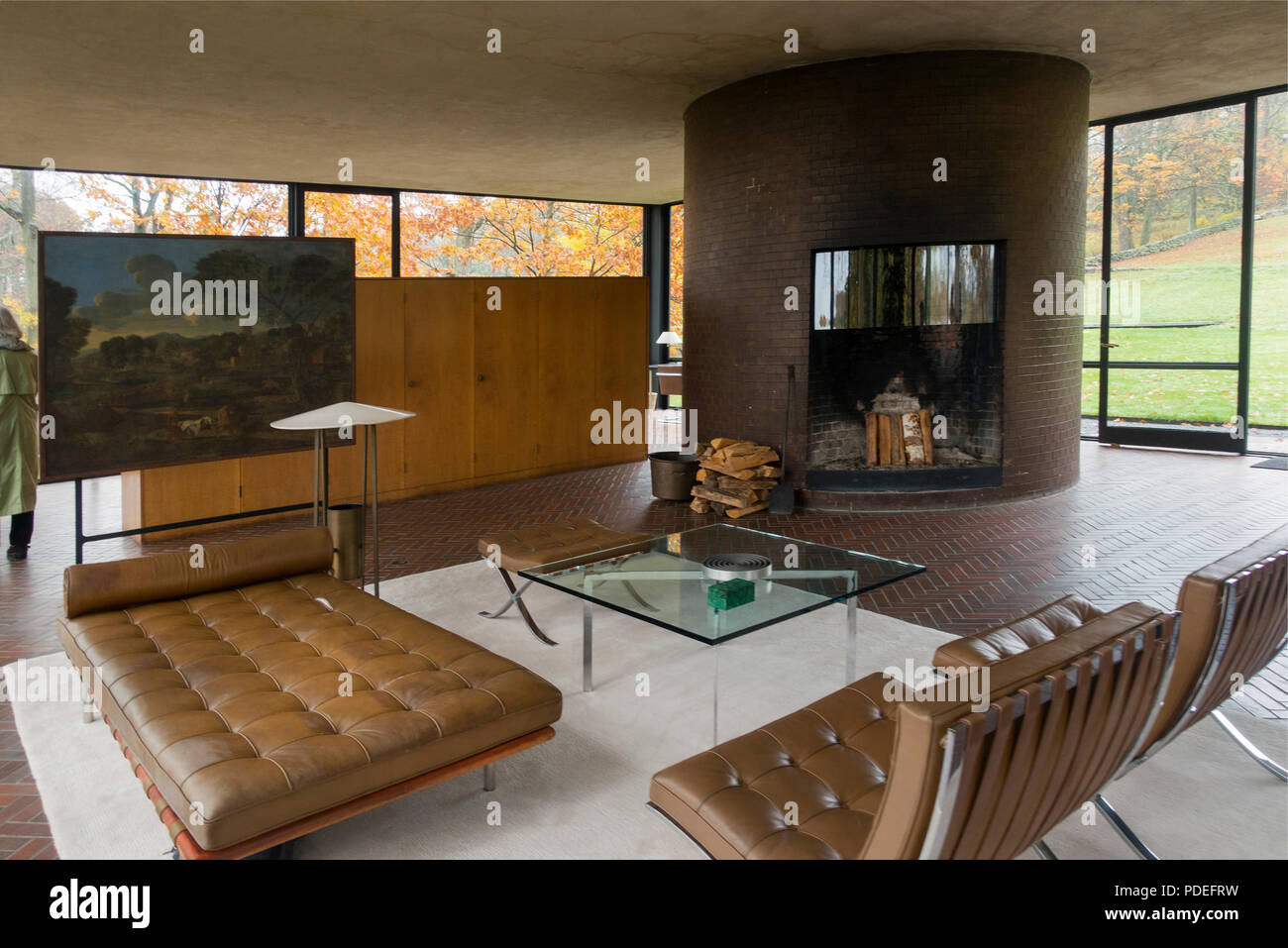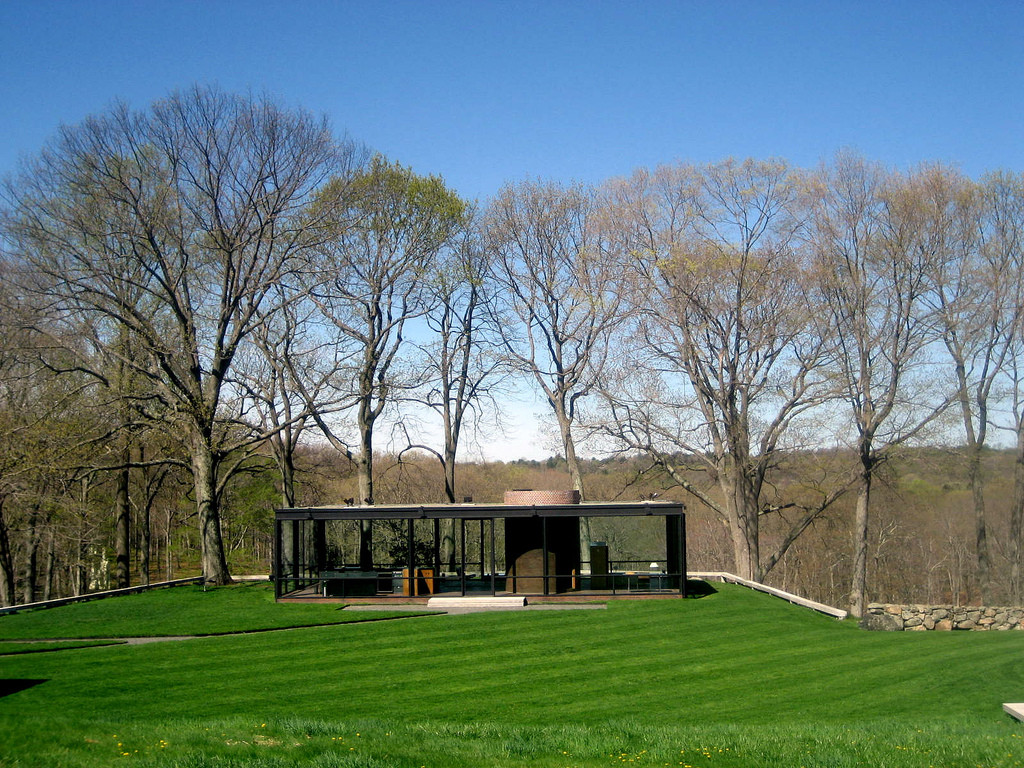Table Of Content

Elaine Lustig Cohen was highly regarded as a graphic designer, artist, and rare book dealer throughout her career, which spanned over fifty years. In 1955, she began her design work in New York by extending the idiom of European modernism into an American context for her diverse clientele of publishers, corporations, cultural institutions, and architects. Her first client was Philip Johnson – architect of the celebrated Glass House (1949) in New Canaan, Connecticut – who commissioned her to design the lettering and signage for the iconic Seagram Building. All tours begin from the visitor's center in downtown New Canaan, Connecticut. The guesthouse sits as a smaller counterpoint to the main glasshouse and is constructed from red bricks.
Atomic Habits for Architectural Professionals
Discover Philip Johnson's Famous Glass House - The Collector
Discover Philip Johnson's Famous Glass House.
Posted: Sat, 04 Nov 2023 07:00:00 GMT [source]
Two years after Johnson died in 2005 (inside Glass House, by the way), the sprawling site was opened to the public and it has been hosting tours ever since. In New York city alone, Johnson's legacy includes the Seagram Building at 375 Park Avenue, the AT&T Building at 550 Madison Avenue, the Lipstick Building at 885 Third Avenue, and the New York State Theater (home to the New York City Ballet) at Lincoln Center. He was also responsible for the Sculpture Garden at the Museum of Modern Art, where he served as the first director of the architecture department in 1930, and to which he donated some 2,200 works from his personal art collection over the course of his lifetime. Johnson’s design is the architectural equivalent of a brilliantly packed suitcase, with a bedroom, bathroom, kitchen, and space for dining and entertaining all arranged inside a simple rectangle measuring 32 by 56 feet.
Alta House by LEVER Architecture
The Philip Johnson Brick House Is Finally Being Restored - Observer
The Philip Johnson Brick House Is Finally Being Restored.
Posted: Thu, 16 Nov 2023 08:00:00 GMT [source]
There is something intimidating to people about the restraint such an existence would demand, as if the house itself were silently judging our own messy choices. Still, the appeal of all that self-control, that rigor, is practically narcotic. A diverse natural habitat in the northeast corner of New Canaan, Connecticut, this former horse farm is home to numerous varieties of flora and fauna.
Recent Connecticut Building
It is a one-story, flat roofed, brick and glass-walled building constructed in two phases per the designs of Philip Johnson. According to William Earls, author of The Harvard Five in New Canaan, Johnson received the commission for the house after introducing himself to a couple who was looking at the site across the street from his Glass House. The Hodgson House won the first prize in residential design at the 1954 International Exhibition of Architecture in Brazil and the 1956 First Honor Award from the American Institute of Architects. The house is currently listed on the National Register of Historic Places and is protected by easements administered by the National Trust for Historic Preservation. Our most comprehensive tour, the In-depth Tour includes the Glass House, Painting Gallery, Sculpture Gallery, Da Monsta, Studio as well as the lower landscape with the Pavilion in the Pond and the Monument to Lincoln Kirstein. This tour includes 1 1/2 miles walking outside over uneven terrain and moderately steep paths.

Other structures on estate
I recently visited the house on a tour that Bentley organized to show off its new Bentayga, the fastest, most powerful, and most expensive SUV on the market. Our group of journalists had the grounds to ourselves and we had lunch in the underground Painting Gallery, which Johnson built to display the art collection he and his partner David Whitney collected. Works by artists like Frank Stella, Andy Warhol, Robert Rauschenberg, David Salle, Cindy Sherman, and Julian Schnabel are shown on a rotating "poster-rack" that allows 42 paintings to be stored and turned as they're moved into view. Visit two important examples of New Canaan mid-century residential architecture on a half-day study tour of Philip Johnson’s Glass House (1949) and the Eliot Noyes House (1954).
Beginning with the Temple Kneses Tifereth Israel in Port Chester, New York (1956), Johnson made fuller use of curvilinear (particularly arch) forms and historical quotation, a pattern continued in the art gallery at Dumbarton Oaks in Washington, D.C. It is behind a stone wall at the edge of a crest in Johnson's estate overlooking a pond. Grass and gravel strips lead toward the building.[6] The house is 56 feet (17 m) long, 32 feet (9.8 m) wide and 10.5 feet (3.2 m) high. The kitchen, dining and sleeping areas were all in one glass-enclosed room, which Johnson initially lived in, together with the brick guest house.
Da Monsta

Inside the galleries are arranged in a three-leaf-clover pattern, with paintings suspended on big, carpeted panels that can be flipped through like posters on a revolving rack. A simple glass box supported by slender steel pillars, it was once one of the most famous houses in the United States. To sit here with Johnson was to enter the heart of the American cultural establishment, and its celebrity may have done more to make Modernism palatable to the country’s social elites than any other structure of the 20th century.
Project gallery
Yet the residence was built near the end of his love affair with modernism; if you look closely, you can see signs of his budding restlessness with its dogma. The 49-acre campus is an example of the successful preservation and interpretation of modern architecture, landscape, and art. The Glass House was home to Philip Johnson and his partner, influential curator David Whitney, a place where they hosted many of the most notable architects, artists and designers of their time. Now the Glass House offers a safe space for honestly exploring the multifaceted and sometimes difficult history where art, architecture and social justice intersect—including Philip Johnson’s controversial personal history. The Hodgson House is sited on a slight knoll on a property that has both wooded sections and grassy fields.
In Johnson's lifetime (1906–
The house became so famous that a police officer was posted to keep out trespassers, and Johnson put up a sign asking for privacy. The New York Times architecture critic wrote that the Glass House did more to make Modernism appealing to the US social elites than any other 20th-century structure. The focal point of the Glass House is the living room, with a rug defining the space and seating around a low table anchoring it. The placement of furniture is precise and contrasts with the ever-changing landscape outside. The bedroom, separated from the living room by built-in storage cabinets with walnut veneer, is the most private room in the house and contains a small desk.
Since its completion in 1949, the building and decor have not strayed from their original design. Most of the furniture came from Johnson’s New York apartment, designed in 1930 by Mies van der Rohe. A seventeenth-century painting attributed to Nicolas Poussin stands in the living room.
The two forged an important bond that resulted in a variety of projects for the Glass House, Yale University, and Lincoln Center, among others. As a painter, Lustig Cohen developed a hard-edged style in the 1960s and 1970s that asserted the canvas’ flat surface. She continued to experiment with bold colors, linear patterning, and abstract shapes in a variety of media including collage and three-dimensional objects. Cost is $20 per person, call ahead as the house is only visible by reserving a tour. Also down there, and definitely not undersized, is Johnson's monument to his friend Lincoln Kirstein, who, among many other things, was a co-founder of the New York City Ballet. The 30-foot tower is designed to be climbed (guests are not allowed to do this), which looks way too harrowing but Johnson did it often, and well into his 80s.
Explore the Glass House campus at your own pace on days dedicated to self-guided visits to the site. Educators will be available across the site to provide information and answer questions. Visitors on self-guided tour days will have access to The Glass House, Painting Gallery, Sculpture Gallery, Studio, Pavilion in the Pond, Monument to Lincoln Kirstein and both upper and lower landscapes. This option will include the newly restored interior of the Brick House beginning on May 2, 2024. Picnicking, professional photography, tripods, and easels are not permitted.
Later, the glass-walled building was used only for entertaining.[9] The exterior sides of the Glass House utilize charcoal-painted steel and glass. The interior is open with the space divided by low walnut cabinets; a brick cylinder contains the bathroom and is the only object to reach floor-to-ceiling. The Glass House, built between 1949 and 1995 by architect Philip Johnson, is a National Trust Historic Site located in New Canaan, Connecticut.

No comments:
Post a Comment